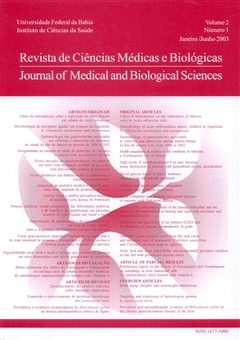Health inequalities in relation to life conditions in Salvador, a Northeastern city of Brazil
DOI:
https://doi.org/10.9771/cmbio.v2i1.4163Keywords:
Inequalities, Mortality, Life conditions.Abstract
The aim of the present study was to analyse the health situation of Salvador inhabitants in relation to their life conditions. The urban area was divided into 75 zones, which were put into four groups according to the Life Condition Indicator – Índice de Condições de Vida. The health conditions were evaluated by the Proportionate Infant Mortality, the Swaroop-Uemura Rate and specific coefficients of Mortality Ratios for Cardiovascular Diseases, Cancer, Infectious Disease, and Violent Death causes. The increase in the Proportionate Infant Mortality, in The Mortality Coefficient caused by circulatory diseases and in The Mortality Coefficient by external causes were observed from 1991 to 1994, at levels which ranged from 2,2 to 25,2 percent. The findings also pointed out that people living in the poorest social strata had higher infant mortality ratios caused by certain groups of diseases. The authors discuss those results based on an approach that analyses the historic formation of the urban area of Salvador and its influence on people’s life and health.Downloads
Download data is not yet available.
Downloads
Published
2003-07-13
How to Cite
Paim, J. S., Silva, L. M. V. da, Costa, M. da C. N., Prata, P. R., & Lessa, I. (2003). Health inequalities in relation to life conditions in Salvador, a Northeastern city of Brazil. Journal of Medical and Biological Sciences, 2(1), 30–39. https://doi.org/10.9771/cmbio.v2i1.4163
Issue
Section
ORIGINAL ARTICLES
License
The Journal of Medical and Biological Sciences reserves all copyrights of published works, including translations, allowing, however, their subsequent reproduction as transcription, with proper citation of source, through the Creative Commons license. The periodical has free and free access.


